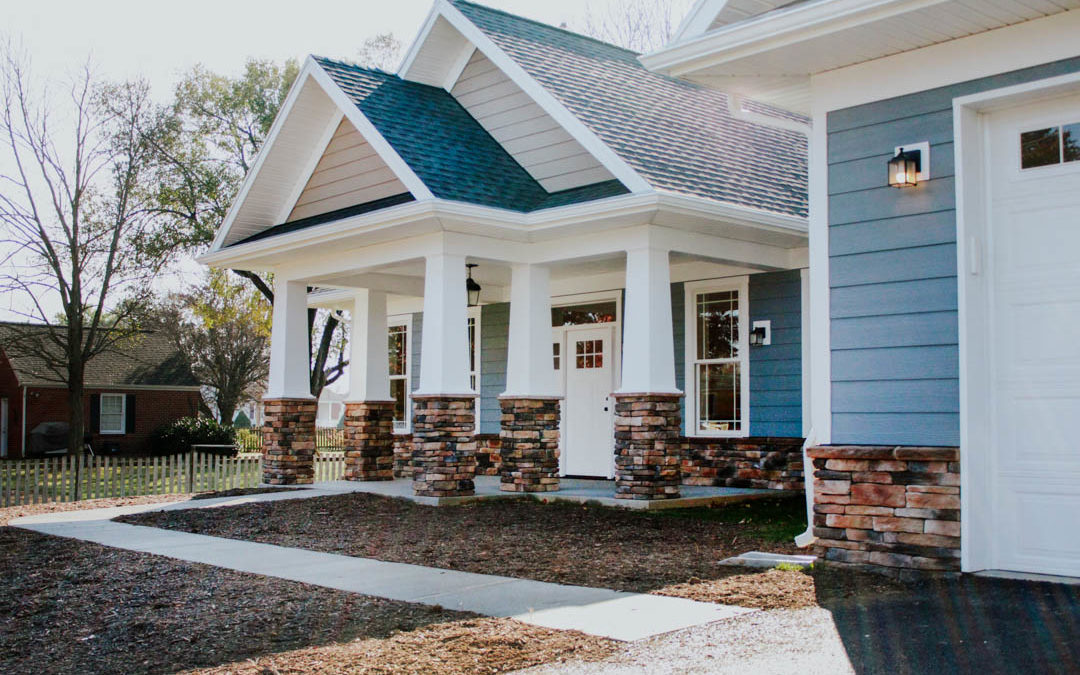
Aging In Place – Part 1: Where to begin?
Charles recently joined Beth Bland of Valley Program for Aging Services (VPAS) on the WSVA Early Mornings podcast to talk about Aging in Place. As a certified Aging in Place Specialist since May 2012, Charles has had many years of experience making these considerations, both professionally and through personal experience with family. In the episode, he addresses questions regarding everything from the basics of what Aging in Place is to specifics of what you can do to implement these modifications.
We begin this Aging in Place blog series with definitions and ways to begin, summarized from the episode, and will expand on the process of design implementation in further blog posts.
What is Aging In Place ?
Aging in Place is all about making a home adaptable as we all inevitably age and have abilities that change. Not only is this design approach about aging but it’s designing for a wide range of abilities. This sort of design can be added to your existing home or built into a new one. It doesn’t have to be a large-scale renovation and can be as simple as adding a towel bar to your bathroom that functions dually as a grab bar.
How does this differ from ADA compliant design?
Often ADA design and Aging in Place modifications overlap, but Aging in Place is centered around customizing for you and your experience. It expands beyond simply meeting the bare minimum requirements of basic building codes to creating something unique and beautiful for your day to day life (In another blog, we will discuss the misconception that Aging in Place design can’t be aesthetically pleasing).
Not only is Aging in Place customized around each individual’s physical design needs, but the entire process can be customized around your needs and might include financial, location, and relational considerations.
Why might I need an Aging in Place designed home?
All of us experience changes as we age and simply through life’s ups and downs. When possible, it’s better to plan ahead for life’s variability and unexpected times. Some things you might consider adaptations for are:
- balance issues
- reduced vision
- reduced hearing
- decreased mobility
- reduced mental capabilities
- loss of strength or endurance
The Planning Phase:
What questions should I consider for where to begin?
- What are the needs for your specific situation and what might you need in the in the future?
- Can your current house be adapted to what your needs will be?
- What are you able to do financially?
- Do you want to renovate or move to a new house?
- Do you have a budget?
- Do you live in a location that can support transportation needs changing, such as being near a bus station?
- Could a family or nurse live with you in this place?
Who can I talk to in advance to answer these questions and help start the process?
Because Aging in Place is so customizable, not all of these people will be pertinent to you, but these are some options to begin.
- Architect: to assess how adaptable your house is
- Contractor: for pricing
- Professionals for more specific needs:
- Occupational Therapist: for specific/personal adaptations
- Financial Advisor: to discuss budget
- Realtor: if moving location
Making things even easier, we have a wealth of knowledge right here in the Valley with many professionals that are experts on Aging in Place! Here are some places to go for more information on making a home aging friendly
- Our blog has more resources and healthier, energy-efficient, and durable design tips, at www.thegainesgroup.com.
- VPAS where Charles is invited on occasion to speak on the topic.
- Amy Depoy, an licensed occupational therapist at Cardinal Care with over 25 years of experience.
- Gabby Koontz from Rendered Homes.
You can listen to the full episode here: Issues in Aging with Beth Bland of VPAS and Charles Hendricks of The Gaines Group talk about Aging in Place. It’s a short 25 minutes that is definitely worth a listen. #DesignMatters
